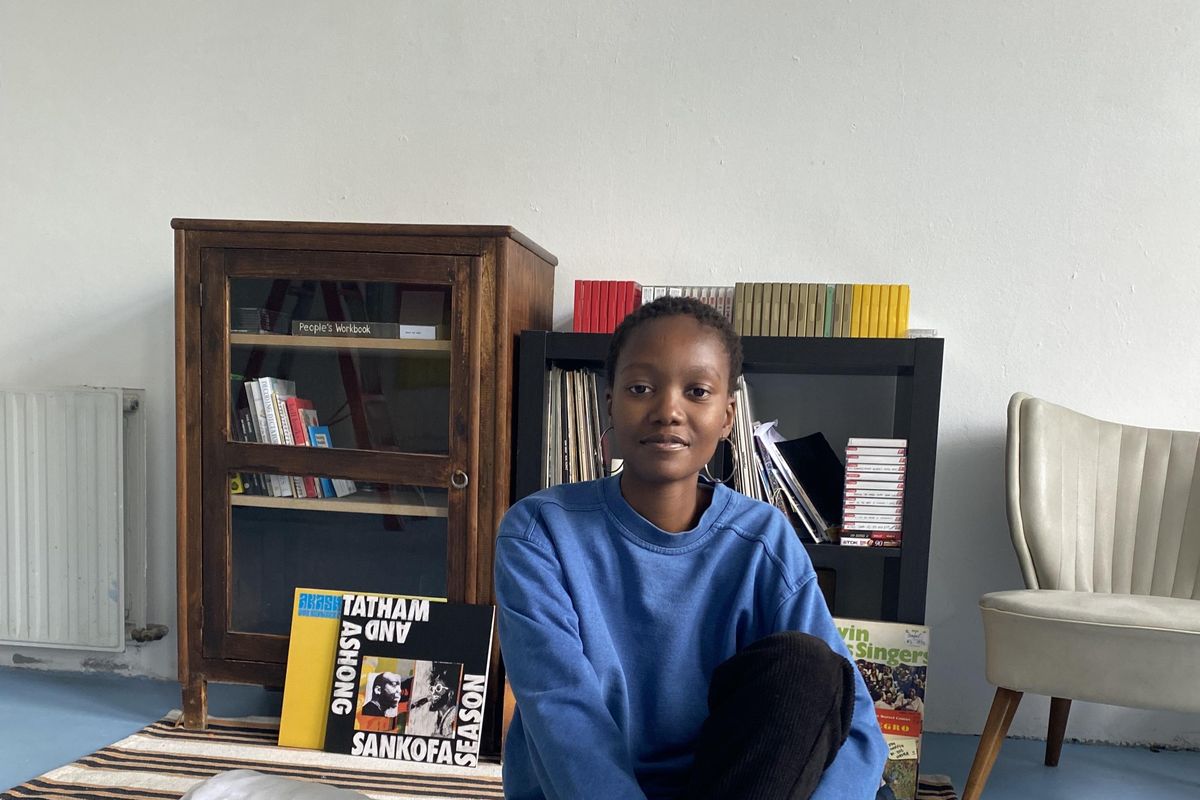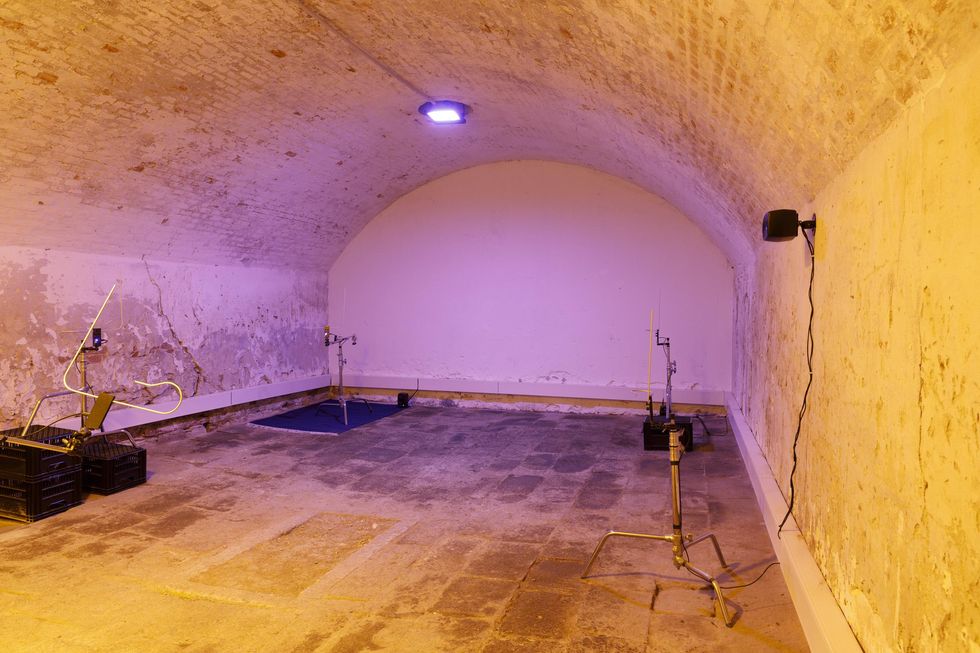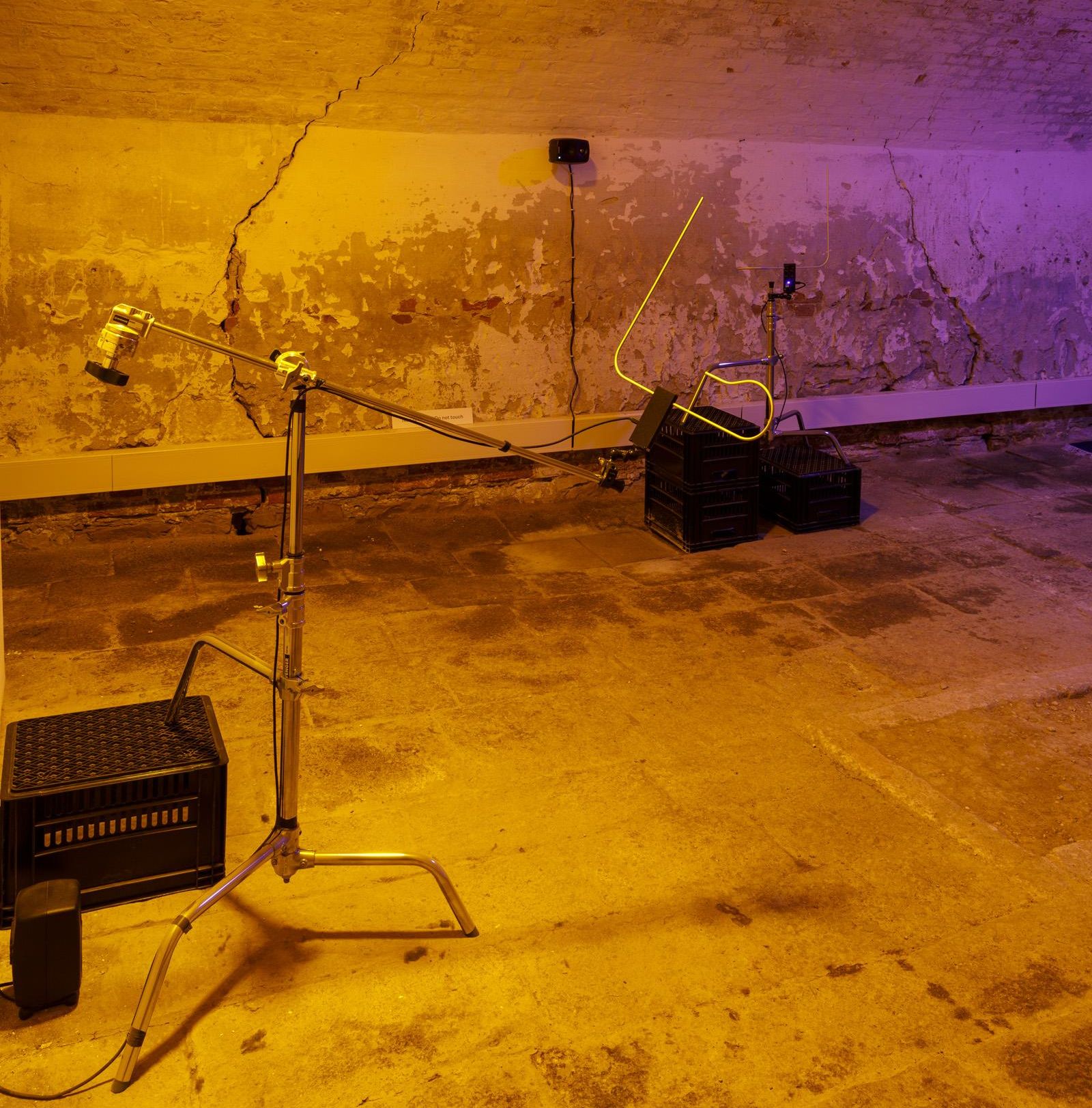South African Artist Simnikiwe Buhlungu on Creating the Sound of Dreams
The internationally-acclaimed multidisciplinary artist is the youngest participant at this year's Venice Biennale, where she is showing her latest work. But, as she tells OkayAfrica, she wants her art to be viewed beyond the parameters of age.

South Africa's Simnikiwe Buhlungu is the youngest artist at this year's International Art Exhibition of La Biennale di Venezia. But Buhlungu, who hails from Johannesburg, would almost rather speak about anything else — from her daily uniform (all black) to her favorite music (Gospel) and what future passions she wants to pursue (beekeeping).
The 59th International Art Exhibition features Buhlungu's project: And the Other Thing I Was Saying Was: A Conver-something, an interactive sound installation which plays recorded sounds from various sources and explores the relationship between theremins, electronic musical synthesizers, and our bodies.
This year's exhibition, The Milk of Dreams, runs in Venice until November 27, 2022. This year's event has been historic for the likes of African countries like Uganda, Cameroon and Namibia, who have all been taking part in the world-famous art event for the first time ever. South Africa, on the other hand, has been taking part in it since 2011, and even obtained a permanent exhibition site in 2012. 27-year-old Buhlungu received one of four grants for the inaugural edition of Biennale College Arte, launched in 2021.
Buhlungu, who is currently based in Amsterdam, where she recently completed a two-year residency at the Rijksakademie, holds a BA in Fine Art from the University of the Witwatersrand in Joburg. Through her solo work, and the collective, Title in Transgression, which she co-founded, Bhuhlungu has used sound and video to navigate traditional trans-generational and socio-historical narratives. Her work has featured in museums such as Grazer Kunstverein in Austria, and WIELS Contemporary Art Centre in Belgium, where she was an artist in residence in 2018.
She spoke to OkayAfrica about her latest exhibit, how being South African influences her work, and ageism in the art industry.
Interview has been edited for length and clarity.
For those who aren't familiar with your work, can you share more about your discipline and the themes you explore?
For a couple of years, my work has been concerned with how knowledges are [sic] produced, which feels almost too open-ended. That's actually kind of why I like it because I feel like there's a lifetime of questions to be asked and a lifetime of answers to be attempted to be answered.
I work across whatever medium the project asks for — sound, text, installation, or short films. On the one hand, it's liberating because you can constantly be moving across various mediums, but at the same time, you don't exactly become a master. I think it's also important to challenge this concept of being a master of a singular field — you don't need to do that. So [I work in] this nice space where I can follow through on my curiosity.
How did you get the opportunity to have your work exhibited at the Biennale in Venice?
There was an open call for a workshop for the Biennale, for artists to participate and workshop their ideas or projects, and I was excited. I look for these opportunities, which are moments of critique, growth, and exchange with other artists, so I applied. Twelve of us were selected to go to Venice for 10 days to workshop proposals that could be included in the Biennale. From the workshop, four of us were selected, including me, for our projects to be on exhibit at Biennale.

"I wanted to conjure the voices of others through a theremin, which works through an electromagnetic field," says Simnikiwe Buhlungu, of her installation at the Venice Biennale.
Photo: Simnikiwe Buhlungu
Tell us about the project you developed, which is still on display at the Venice Biennale.
I proposed [a project to signify] the meeting point of five histories, five voices, five people, five remnants and utterances through the use of pheromones. I wanted to conjure the voices of others through a theremin, which works through an electromagnetic field.
I was loosely responding to the theme of the main exhibition, The Milk of Dreams. And I thought: What is this construct of dreams? Whose dreams are we talking about? What does dreaming sound like or look like? How are they synthesized? And then this is how I got to use these instruments as ways of conjuring, which is what they do anyway through our bodies, but I thought, what else can we conjure through these instruments?
It included the voices and utterances of Mam' Miriam Makeba, Binyavanga Wainaina, Hadedas, Pink noise, and rhythm. It had people in conversation with instruments and conversation with natural phenomena, so I found this quite interesting to explore how they could speak to each other about dreams, what dreams are, and what they're not.
At 27 years old, you're the youngest artist whose work is on display at Venice's Biennale. What does that mean to you?
I try not to draw attention to that because I think it will be used as a way of viewing or positioning my work. Age and ageism within the arts tend to determine how people treat you, how people treat the work, and how we treat each other. I deliberately haven't said [that I'm the youngest artist], but I think it's great. I think it's interesting. It makes me nervous. It makes me feel weird. It makes me ask more questions — but I also try not to draw attention to it because ageism is real.
What have your experiences been as an African artist who now operates in an international and largely European space, from the Netherlands to Italy?
It's been very disorienting. You feel somewhat off-circuit because you have to start from scratch. I don't mean 'setting up your life' starting from scratch. I mean, you have to tell people, my name is so-and-so, I'm from this country. I'm speaking about apartheid all the time because you constantly have to explain the context of the country where you come from. So I've noticed that I'm doing much more groundwork than I never had to do at home. When you're at home, you can dive into the material straight away. You don't have to lay the foundation. It's time-consuming, but I'm learning a lot about how I even tell the history of my country.

Simnikiwe Buhlungu's installation at the Venice Biennale uses the voices and utterances of Mam' Miriam Makeba and Binyavanga Wainaina together with the sound of Hadedas, Pink noise, and rhythm to construct the sound of dreams.
Photo: Simnikiwe Buhlungu
Why is it that you typically give these explanations about South Africa and its history to people who view your art? Has the country been influential in how you practice and understand art?
Being from South Africa is a big part of how I want to ask questions or certain historical strings and thoughts in my work. But at the same time, there's this kind of expectation that you will be the one to perform this positionality of being from South Africa. They want you to talk about your identity; they want identity politics. And the minute you don't do that, it's seen as though your practice is deficient.
I play around a lot with linguistics, and people ask what certain words mean. I would never feel the need to explain this to another South African. If someone doesn't understand the context, they won't understand the work, so I find myself having to explain [my background] mostly because of historical legacies.
What are some concepts you're thinking about these days that influence your work?
I'm thinking about how to challenge expectations of permanence somehow. Many of these exhibitions, because of their history of showing the best of what's happening in each part of the world, almost monumentalize things. Look at practices of conservation and museum collection policies. All of these things aim to preserve forever. Performance art is an interesting way of thinking about permanence because of this. How can we play against this expectation of freezing time, and who are we freezing this time for? There's space for us to question the permanency of art. It's okay for things to live for a short time span and then die. It's okay for things to exist in a moment and not forever. I think we should question immortality in art, the concept of artwork existing forever.
- Bobi Wine Takes His Fight to Venice - OkayAfrica ›
- Cameroon's Pavilion Brings the first NFT Art Show to the Venice ... ›
- Lebohang Kganye's Ever-Evolving Journey Across Memory and ... ›
- Ugandan Artists to 'Dream in Time' at this Year's Venice Biennale ... ›

